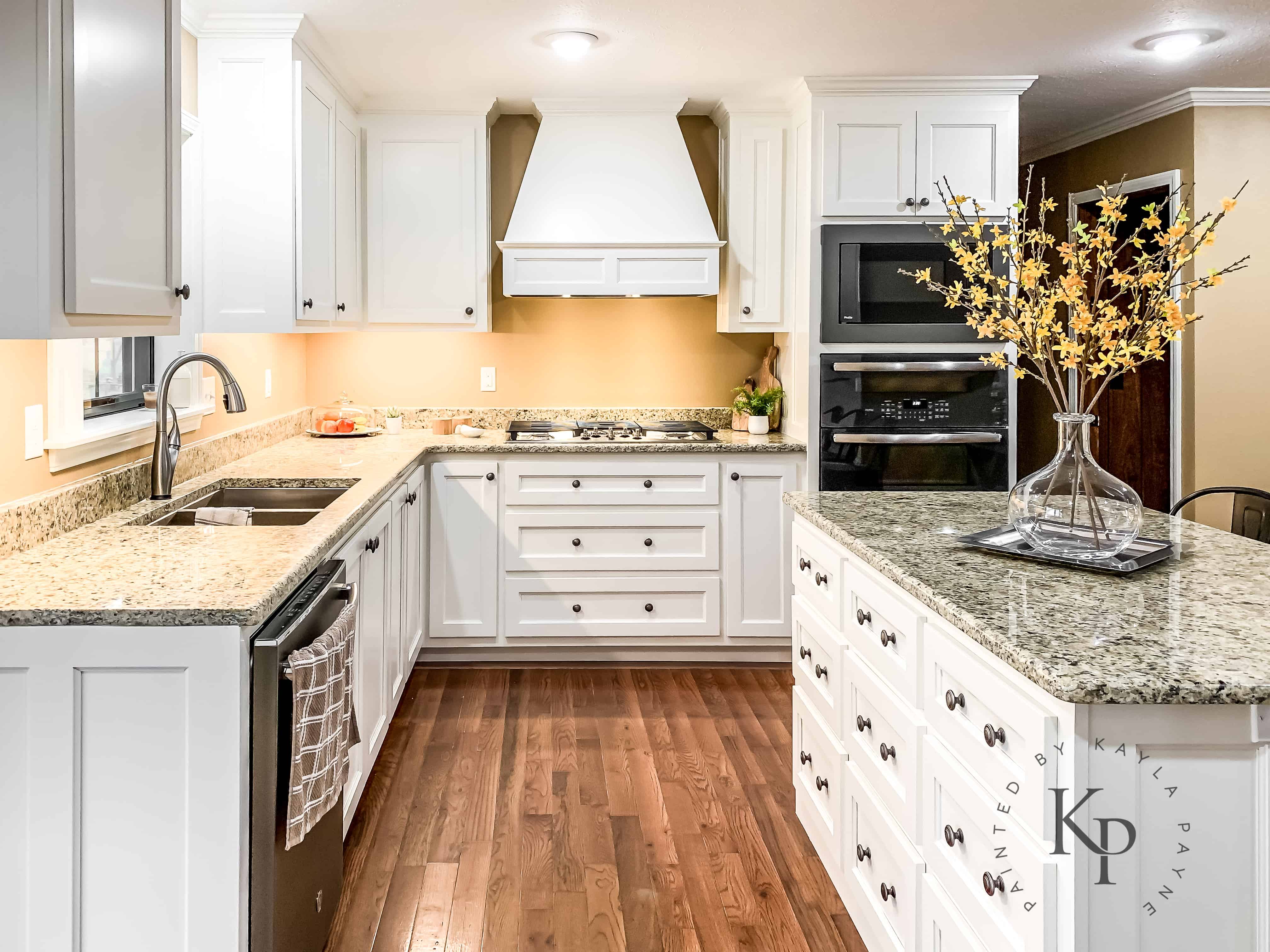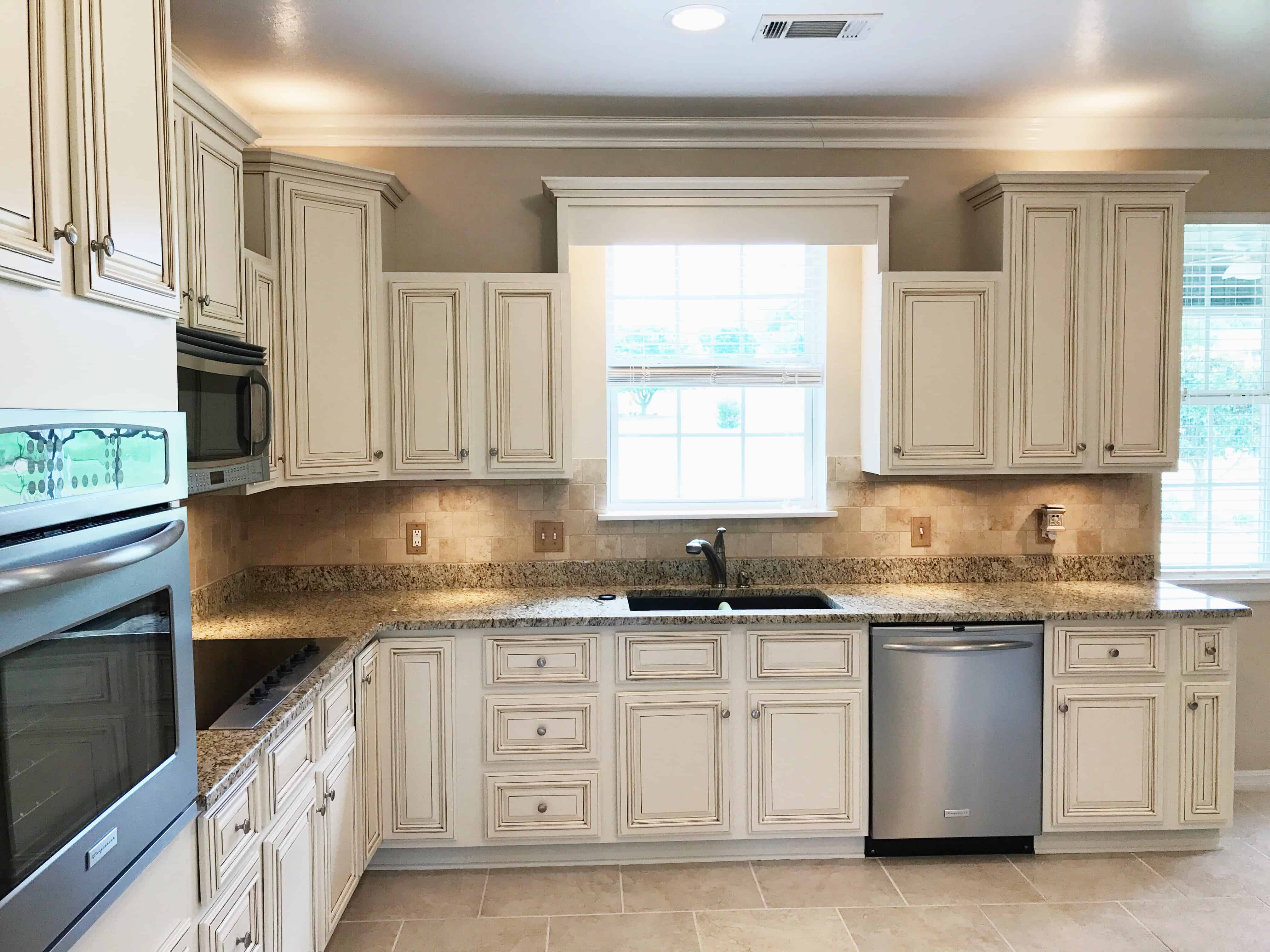Popular Off-White Paint Colors for Cabinets: Best Off White Paint For Cabinets

Choosing the perfect off-white for your kitchen cabinets can feel overwhelming, but understanding the subtle differences in undertones can make the process much smoother. The right shade can dramatically impact the overall feel of your space, creating a warm and inviting atmosphere or a bright and airy one. This section explores some of the most popular off-white cabinet paint colors, their characteristics, and how they might fit into different kitchen designs.
Popular Off-White Paint Colors and Their Characteristics, Best off white paint for cabinets
Selecting the ideal off-white paint for your cabinets involves considering more than just the name; undertones play a crucial role in the final look. The following table lists five popular choices, along with their brand, color code, and a brief description. Remember that color perception can vary slightly depending on lighting and your monitor’s settings.
| Color Name | Brand | Color Code | Brief Description |
|---|---|---|---|
| White Dove | Benjamin Moore | OC-17 | A versatile, slightly warm off-white with a hint of gray, making it suitable for various styles. |
| Creamy | Sherwin-Williams | SW 7501 | A classic, warm off-white with subtle yellow undertones, lending a cozy and inviting feel. |
| Alabaster | Sherwin-Williams | SW 7008 | A popular, slightly cool off-white with a hint of gray, offering a clean and sophisticated look. |
| Simply White | Benjamin Moore | OC-117 | A bright, crisp off-white with minimal undertones, perfect for creating a fresh and airy space. |
| Swiss Coffee | Benjamin Moore | OC-45 | A warm off-white with subtle beige undertones, offering a timeless and elegant appearance. |
Undertones of Popular Off-White Paint Colors
Understanding the undertones is key to selecting the perfect off-white for your cabinets. These subtle hints of other colors significantly influence the overall appearance and mood of your kitchen.
| Color Name | Undertones |
|---|---|
| White Dove | Warm, Gray |
| Creamy | Warm, Yellow |
| Alabaster | Cool, Gray |
| Simply White | Minimal, Very slight warmth |
| Swiss Coffee | Warm, Beige |
Suitable Kitchen Styles for Each Off-White Paint Color
The right off-white can enhance the style of your kitchen. Consider these pairings for optimal results.
Best off white paint for cabinets – The choice of off-white significantly impacts the overall aesthetic. Pairing the right shade with your existing design elements can elevate the space’s visual appeal.
- White Dove: Traditional, Farmhouse, Transitional
- Creamy: Rustic, Cottage, Warm Modern
- Alabaster: Modern, Contemporary, Minimalist
- Simply White: Bright and airy spaces, Scandinavian, Coastal
- Swiss Coffee: Elegant, Classic, Traditional
Factors to Consider When Choosing Off-White Paint for Cabinets

Choosing the perfect off-white for your kitchen cabinets is a crucial design decision. Getting it right can dramatically enhance your kitchen’s aesthetic appeal, while a poor choice can make the space feel dull or unbalanced. Several key factors must be carefully considered to ensure a harmonious and stylish outcome.
Kitchen Color Palette Coordination
The existing color palette of your kitchen—walls, countertops, and flooring—significantly impacts the final look of your off-white cabinets. A successful color scheme creates a cohesive and visually pleasing environment. For instance, warm off-whites, like creamy whites or those with subtle yellow undertones, pair beautifully with warm-toned wood floors and granite countertops with beige or brown hues. Imagine a kitchen with honey-oak flooring, light beige granite countertops, and cabinets painted in a warm off-white like Benjamin Moore’s “White Dove.” This creates a classic, inviting feel. Conversely, cool off-whites, those with gray or blue undertones, complement cool-toned spaces. A kitchen with gray-toned porcelain tile flooring, white quartz countertops, and cabinets painted in a cool off-white like Sherwin-Williams “Alabaster” would offer a modern, clean aesthetic. However, pairing a warm off-white with cool-toned elements, or vice versa, can result in a disjointed and visually jarring effect. For example, using a warm off-white with cool gray countertops could make the kitchen feel unbalanced and lack visual harmony.
Impact of Light Levels on Off-White Paint
Lighting plays a crucial role in how the off-white paint appears on your cabinets. Natural light, particularly during different times of day, can significantly alter the perceived shade. An off-white that appears creamy under morning sunlight might look stark white under the harsh midday sun or subtly gray in the evening. Artificial lighting also affects the appearance; incandescent lighting can cast a warmer, yellowish glow, while fluorescent lighting can make the off-white appear cooler and possibly even slightly bluish. Consider testing your chosen off-white paint samples in various lighting conditions throughout the day and evening to get a realistic sense of its appearance. This will help prevent surprises after the painting is complete.
Durability and Cleanability of Cabinet Paints
Different paint finishes offer varying levels of durability and cleanability, which are crucial factors for kitchen cabinets, given their high-traffic nature and exposure to grease and spills.
| Paint Finish | Pros | Cons |
|---|---|---|
| Eggshell | Low sheen, hides imperfections well, relatively durable | Less washable than satin or semi-gloss, more prone to showing scratches and scuffs |
| Satin | Easy to clean, durable, resists scratches better than eggshell | Slightly more sheen than eggshell, may highlight imperfections |
| Semi-gloss | Most durable and washable, very easy to clean, resists scratches and moisture | High sheen, may highlight imperfections more than other finishes |
Preparing and Painting Cabinets with Off-White Paint

Transforming your kitchen or bathroom with a fresh coat of off-white paint on your cabinets is a rewarding DIY project. Proper preparation is key to achieving a professional-looking finish that will last. This section will guide you through each step, from cleaning to the final coat of paint, ensuring a stunning, long-lasting result.
Cabinet Preparation
Thorough preparation is crucial for a smooth, even paint finish. Skipping steps will lead to an uneven, unprofessional-looking result that won’t last. This involves cleaning, sanding, and priming your cabinets.
- Clean the Cabinets: Begin by thoroughly cleaning your cabinets to remove grease, grime, and any old finishes. Use a degreasing cleaner, like TSP (trisodium phosphate), following the manufacturer’s instructions. Rinse thoroughly with clean water and allow to dry completely. A clean surface ensures the primer and paint adhere properly.
- Sand the Cabinets: Once dry, lightly sand the cabinet surfaces with fine-grit sandpaper (120-220 grit). This helps to create a slightly rough surface that will improve paint adhesion. Focus on any imperfections or uneven areas. Wipe down the cabinets with a tack cloth to remove sanding dust.
- Prime the Cabinets: Applying a high-quality primer is essential, especially over dark or glossy surfaces. Primer seals the wood, prevents bleed-through from the existing finish, and provides a smooth, even base for the paint. Use a high-quality brush or roller to apply a thin, even coat, ensuring complete coverage. Allow the primer to dry completely according to the manufacturer’s instructions.
Applying Multiple Coats of Paint
Applying multiple coats ensures a smooth, even finish and enhances the color’s depth and vibrancy. Proper technique prevents brush strokes and ensures even drying.
- First Coat Application: Using a high-quality brush or roller designed for cabinet painting, apply a thin, even coat of off-white paint. Work in sections, maintaining a wet edge to prevent lap marks. Allow the paint to dry completely according to the manufacturer’s instructions. This usually takes several hours, depending on the paint type and environmental conditions.
- Second Coat Application (and subsequent coats if needed): Once the first coat is completely dry, lightly sand with very fine-grit sandpaper (320 grit or higher) to smooth out any imperfections. Wipe away dust with a tack cloth. Apply a second coat of paint, using the same technique as the first coat. For optimal coverage and depth of color, a third coat may be necessary, particularly with lighter colors like off-whites. Allow each coat to dry completely before applying the next.
- Avoiding Brush Strokes: To minimize brush strokes, use long, even strokes in one direction. Maintain a wet edge to blend the paint smoothly. A high-quality brush or roller with fine bristles will also help to create a smoother finish. For particularly noticeable brush strokes, lightly sand between coats with very fine-grit sandpaper.
Best Off-White Paint for Cabinets
Choosing the right off-white paint is crucial for achieving the desired look and feel in your kitchen or bathroom. Consider the undertones—warm, cool, or neutral—to ensure it complements your existing décor and lighting. Popular choices often include Benjamin Moore’s White Dove, Sherwin-Williams’ Alabaster, and Farrow & Ball’s Wimborne White. These paints are known for their durability and beautiful finishes, holding up well in high-traffic areas. However, the “best” off-white is subjective and depends entirely on personal preference and the specific environment. Test paint samples on your cabinets in different lighting conditions before committing to a full can. This allows you to see how the color changes throughout the day and how it interacts with your existing décor. Don’t hesitate to visit your local paint store for expert advice and to explore various samples.
